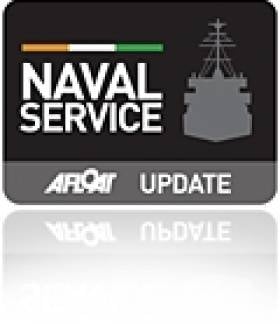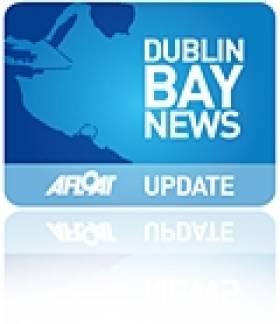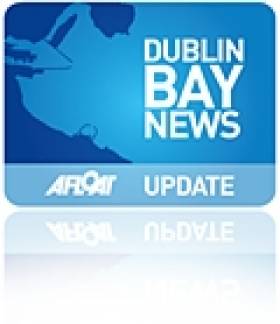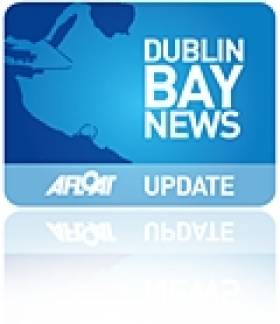Displaying items by tag: Dun Laoghaire Harbour
Heritage Week: Maritime Lecture Seminar Day
Below is listing of the lecture programme and times.
12.30 – 1.30 pm. Neutral Ireland's Role in the Sinking of the Bismark, May, 1941. By Dr. Michael Kennedy, Executive Editor, Documents on Irish Foreign Policy, Royal Irish Academy.
1.30 – 2.30 pm. Traditional Boats of Ireland. - Wooden workboats from all the Maritime Counties of Ireland. By Darina Tully, Lecturer and Maritime Archaeologist.
2.30 – 3.30 pm. Too Many Bags in the Lifeboat. A Lifeboat Tragedy at Bray 1876. By James Scannell, Lecturer and P.R.O of the Old Dublin Society.
3.30 – 4.00pm. Model Boats, A short talk to accompany the exhibition. By Garry Mooney secretary of the Irish Model Boat Club.
4.00 – 5.00 pm. Maritime Guinness, The Ships, Yachts and Barges of the Guinness Dynasty. By Dr. Edward Bourke, Diver, Maritime Historian and Author of "Guinness, the Family, the Business and the Black Stuff"
5.00 – 6.00 pm. Ireland's Armada Heritage. The Story of the Spanish Armada of 1588.The discoveries of the wrecks on the Irish Coast and the recovery of artifacts. By Cormac Lowth, Lecturer, Author and Diver.
For further information contact Barney Yourell Mob: 087 900 7466 No seminar charge – donations accepted
Information in general on the Maritime Institute of Ireland can be found on www.mariner.ie and for all the other events held during the National Heritage Week go to www.heritageweek.ie/
- Dublin Bay News
- Maritime Institute of Ireland
- Irish Model Boat Club
- Dun Laoghaire Club
- Dun Laoghaire Harbour
- M.I.I.
- Dun Laoghaire News
- RNLI Lifeboats
- National Heritage Week
- Heritage Week
- Maritime Lecture Seminar
- Sinking of the Bismark
- Traditional Wooden Irish Boats
- Guinness Ships
- Model Boats
- Ireland's Armada Heritage
- Spanish Armada
- Dun Laoghaire Maritime Museum
Irish Lights Appoint New Chief Executive
For the last 19 years Ms Shields has worked in the marine sector, most recently as Director of Strategic Planning and Development at the Marine Institute since 2004. In this role she had responsibility for oversight and management of the National Marine Research Programme, EU and International Policy and Programmes, Ocean Energy, Marine Technology and the Marine Data and Information Services Group of the Marine Institute.
Prior to this she held the position of Director of Science and Technology at the Marine Institute with responsibility for Research Vessel Operations, the National Seabed Survey, Oceanographic Services and the National Data Buoy Network. In addition she has worked in the marine tourism, aquaculture and private-forestry sectors.
- Ocean Energy
- Marine Institute
- Commissioners of Irish Lights
- Irish Lights
- Dun Laoghaire Harbour
- Yvonne Shields
- CIL
- Dun Laoghaire Harbour News
- National Marine Research Programme
- Marine Data and Information Services Group
- Director of Science and Technology at Marine Institute
- Marine Insitute Research Vessel Operations
Dun Laoghaire 'Needs Master Plan To Move Harbour Forward'
In a letter to The Irish Times last week, the principal of Ireland's largest sailing school hails the introduction of the new 'master plan' for Dun Laoghaire Harbour.
Alistair Rumball, director of the Irish National Sailing School (INSS), argues that the harbour's current financial model "cannot bring us forward".
He highlights the seasonal nature of the harbour's core businesses, which include a ferry service, four private yacht clubs, the Commissioners of Irish Lights (CIL) and the public marina and boat yard.
"Due to seasonality these operations cannot financially support the harbour all year," he writes. "We need the same numbers of the public to be using harbour facilities at mid- summer as mid-winter."
'Seafront Memorials' Tours of Dun Laoghaire Harbour
The tour which is free starts at the meeting point of the Queen Victoria Fountain which too forms part of the tour alongside the George VI memorial
and the Christ the King monument.
The outdoor event is part of the 'Summer of Heritage' which is organised by Dun Laoghaire-Rathdown County Council. The initiative is now in its fourth year and this year's highlight of the programme are tours of the newly renovated Seapoint Martello tower.
The coastal structure has been restored and is a fine example of these 19th century defensive forts, built along the coast to defend during the Napoleonic wars.
This summer also sees Carrickbrennan graveyard feature for the first time, the resting place of many sailors lost in maritime disasters since the 17th century.
Sightseeing along 'The Metals', a historic pathway that linked the quarry in Dalkey to the harbour in Dún Laoghaire also returns in the programme due to its popularity last year.
To read more about the the Summer of Heritage other free events in the arts, literature, sports, music and for the family, go to www.dunlaoghaire.ie/summer-of-heritage/ and www.dlrevents.ie/heritage11.html
- Events
- RNLI
- dlrcoco
- Dublin Bay News
- Dun Laoghaire Harbour
- Coastal Notes
- Dun Laoghaire News
- Seafront Memorials
- Guided Tours
- DunLaoghaireRathdown County Council
- DLR
- DLR events
- Martello Towers
- Seapoint Martello Tower
- The 'Metals'
- Queen Victoria Fountain
- King George VI monument
- Crimean War cannon
- Event news
- Napoleon
- Napoleonic Wars
- 1895 Dun Laoghaire Lifeboat Disaster
- RNLI Dun Laoghaire
- Christ the King monument
- Summer of Heritage
Seasonal Scenes Set for Fishguard
Fast-ferry Stena Lynx III departed Dun Laoghaire for Fishguard Harbour on a repositioning voyage today, writes Jehan Ashmore.
The 80m craft built in Hobart, Tasmania is due to dock at the Pembrokeshire port this afternoon in advance of seasonal sailings on Stena Line's Fishguard-Rosslare.The Stena 'Express' fast-ferry service is to resume in just over a fortnight's time. Sailings are scheduled to a daily single round trip between 1 July-4 September.
The 627 passenger / 120 car capacity fast-ferry will operate in tandem with the year-round operated conventional ferry-service served by the Stena Europe. Passage times are 120 minutes for the fast-ferry service while the Stena Europe takes 3 hours 30 minutes to sail across the St. Georges Channel.
In the same week that the fast-ferry takes up summer sailings from Fishguard, the small French flagged cruiseship Le Diament is to make the first of three calls in July and once in August.
The motoryacht-like vessel which can accommodate 226 passengers is the first cruise caller of the season and is run by the only French-owned cruise operator Compagnie De Iles Du Ponant.
UK Registered Trawler Detained off Bray Head
of the Gardai. The L.E. Orla which berthed alongside the harbour's Carlisle Pier, is designated as a coastal patrol vessel (CPV) along with sistership L.E. Ciara (P42).
This is the second detention of a vessel this year. According to the Naval Service in 2010 there were 1666 boardings carried out which resulted in warnings to 70 vessels and eight detentions.
Aware's Harbour 2 Harbour Walk Around Dublin Bay
Alternatively walkers are welcomed to take the walk in the reverse direction starting at Howth and terminating at Dun Laoghaire. The walk takes approximately 4-hours to complete. The 16.4 mile route that skirts the shores of Dublin Bay will offer great views!
The walk last year was taken by families, friends and individuals and provided participants with a great sense of achievement!
For this year's event, walkers are invited to take part by booking places in advance online. Entries (€10 per person) close at midnight on Sunday 13 March, click HERE. Late registration will also be available on the morning of the walk (€15 per person) or email [email protected]
To read more about Aware click http://www.aware.ie (noting the locall Aware Helpline Tel: 1890 303 302 / calling from overseas +353 1 6766 166) and further information about the Helpline click HERE
Dun Laoghaire Harbour Invites Public's Views on Masterplan
The Dun Laoghaire Harbour Company has invited the public to submit their ideas about the future of the harbour. A masterplan is to be developed so to address the changing emphasis of the harbour from a commercial harbour to a recreational harbour and the impact of change in the profile of ferry sailings on the Dún Laoghaire - Holyhead route. For further details please logon HERE In addition a map of the harbour, showing the extent of the area concerned.
Sky Set Sail for “Treasure Island” Shoot
Shooting is scheduled for a five-week period, starting late November in Dublin and Cork. The Earl of Pembroke is currently berthed at Dun Laoghaire's Carlisle Pier, where SquareSail crew are adapting the vessel in preparation for shooting which includes the use of the East Pier Battery. Also assisting the shoot will be the Irish National Sailing School (INSS) based in Dun Laoghaire, which for over twenty years has provided marine co-ordination services for film and TV work.
The two-part, 120 minute drama was commissioned for the Sky 1 HD TV channel. The director is Steve Barron (Arabian Nights, Merlin, England Manager) and the producer is Laurie Borg (Made in Dagenham, Little Voice, Sense and Sensibility). Also coming on-board the film-team are Irish costume designer, Lorna Marie Mugan (Killing Bono) and line producer Des Martin (Tara Road).
In the New Year the production moves to the Caribbean island nation of Puerto Rico. It is expected that the drama be released on Sky 1 HD TV in Christmas 2012.
The Earl of Pembroke is owned by Cornwall based SquareSail which specialises in providing tall-ships for film productions. The Swedish built vessel was launched as Orion in 1948 and worked bringing timber from Scandinavia to the UK. In 1974 the vessel was laid-up for several years until SquareSail purchased her in 1979. She underwent an extensive restoration programme to emerge in 1994 in the appearance of an 18th century barque.
Setting 9,500 square foot of sails, the tall-ship has 14 sails. Should the winds be slack, the 174 ton vessel has a MAN 6 –cylinder, 300hp engine which drives a three-bladed propeller. As for her silver-screen credits, they include Cutthroat Island, Frenchman's Creek, Hornblower Series III and Longitude.
Treasure Island follows the recent filming of Neverland which included shooting locations in Dalkey and Killiney in Co. Dublin and neighbouring Co. Wicklow. Both productions are part of a multi-million pound investment by Sky for their high-definition (HD) drama department.
Looking for further reading on Tall Ships in Ireland? Click the links below:
Click this link to read all our Tall Ships Stories on one handy page
Previewing Ireland's Tall Ships 2011 Season
Can Ireland Get a New Tall Ship?
Film To Seek "Treasure Island" in Dublin Bay
The 145-foot Earl of Pembroke, a three-masted barque will be centre-stage. Shooting is expected to start in early November for the made for TV movie which is to be broadcast in two parts.
Dun Laoghaire's strategic location on Dublin Bay with close proximity of Dalkey Island, Killiney Bay and Wicklow Mountains to the south coupled with the backdrop of Howth Peninsula, will provide plenty of scope for cinema-photography.
With the Earl of Pembroke to be based in Dun Laoghaire, the harbour town is also home to the film's production company Parallel Film Productions which has included works such as Amongst Women, Breakast on Pluto and the TV series, The Clinic for RTE. In addition the locally based Irish National Sailing School (INSS) on the West Pier, aside from operating sailing activities, have also built up a strong reputation in marine-support and equipment services for film, TV and advertising. Projects have included the films, Saving Private Ryan, Into The West and TV series The Tudors.
The 350-tonnes, Earl of Pembroke is by no means just a floating prop. Launched as Orion, the vessel was built at Pukvik, Sweden in 1948 and for nearly three decades she sailed the North Sea on the timber trade from the Baltic Sea to British ports until laid-up in Denmark in 1974.
The vessel lanquished for several years but in 1979, Cornwall based Square Sail purchased her. In 1985 the vessel underwent a complete restoration programme and in 1994 the vessel re-emerged as a 18th century barque. Among the many film roles, she became the HMS Hotspur in the TV series 'Hornblower'. This year the vessel was involved in a major pirate themed mini-series for French TV which was shot in Corsica. Square Sail's specialisation in providing 'tall-ships' for the film industry also includes the vessels, Keskalot and Pheonix.





































































